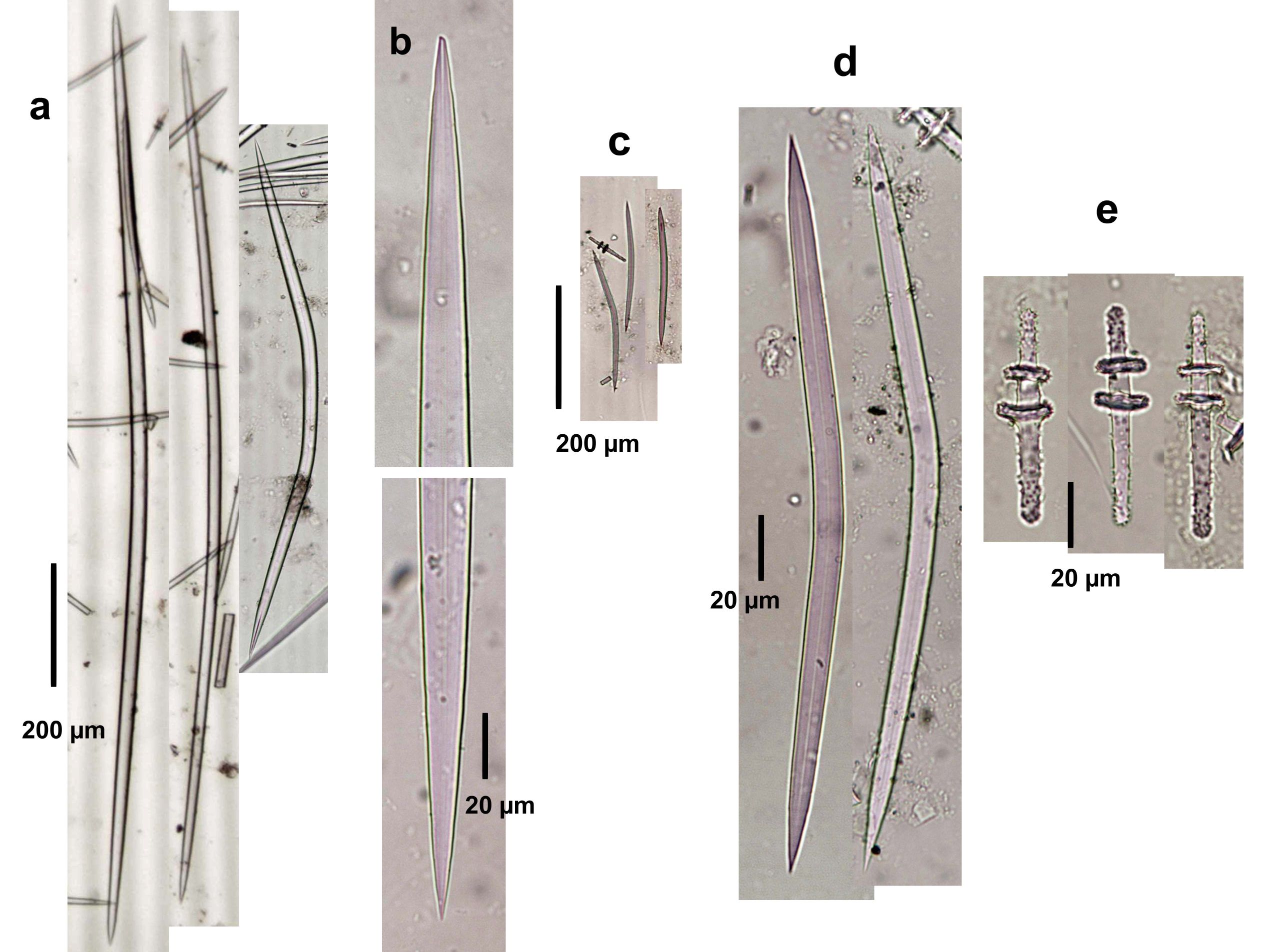the Sponge Guide - www.spongeguide.org
Observed Characteristics:
orange
orange-yellow
lobate
massive
tube
crumbly
Colombia
Species Description and Notes
Description: Sprawling masses with cylindrical-tubular lobes, reaching several dm (up to 1 m) in diameter and 15-20 cm in thickness; some specimens may grow as group of tubes. Top of mounds are flattened, with a central concave depression, several cm wide, containing a stretched membrane, perforated to form the oscules, through which confluent exhalant canals are visible. The surface is heavily pierced by rather wide (1-5 mm) grooves, forming a labyrinth pattern; surface between grooves is flat, heavily fouled. Color of tissue is orange-yellow, visible through grooves and oscules. Consistency is toughly compressible, spiculose, but tissue can be torn apart with some strength. The skeletal structure has not been studied in our specimens, but according to van Soest (1984, as. D. flavus), there is a distinct ectosomal cortex of tangential megasclere oxea overlaid by discorhabd microscleres, all supported by a loose reticulation of spicule tracts with many single spicules strewn in confusion, all in a high spicular density. Spicules of the studied material in two types: (1) structural oxea, with long and sharp endings, ocurrying in a variety of sizes, possibly in two categories, oxea I, longer and stout, 350-1425 µm long by 9.8-30 µm wide, sometimes doubly bent, and oxea II, more consistently shorter, 210-290 µm long by up to 4.5 µm wide. (2) spined rhabds with two subcentral discs (acanthose discorhabds), with both ends slightly swollen, with rhabds 66-72 µm long and 4-7.5 µm wide, the discs having 8- 20 µm in diameter; developmental stages with rhabds having more acute ends and being less spinous.
Notes: This is a deep reef species, living exposed but in vertical to overhanging substratum. Also known as Didiscus flavus van Soest, 1984. This species can be confused in the field with related species of Myrmekiderma (also pictured here). It can be distinguished by the flattened shape of the apex of lobes-tubes and of the characteristic oscules, and definite identification relies on the presence of discorhabds.
Author Reference: Hechtel, 1983
Link: World Porifera Database
Tissue and Spicule Images

Spicule Images: a) Oxeas I; b) endings of oxea I; c) oxea II; d) magnification of d); e) discorhabds. Sample from Santa Marta, Colombia.
Source Specimen: http://www.spongeguide.org/ thumbs/00115/01896.jpg
Images
Didiscus oxeata
Location: Colombia, Santa Marta
Photographer: Sven Zea
![<i>Didiscus oxeata</i> <br />[Colombia, Santa Marta]](thumbs/00115/01896.jpg)
Location: Colombia, Santa Marta
Photographer: Sven Zea
![<i>Didiscus oxeata</i> <br />[Colombia, Santa Marta]](thumbs/00115/01897.jpg)
Location: Colombia, Santa Marta
Photographer: Sven Zea
![<i>Didiscus oxeata</i> <br />[Colombia, Santa Marta]](thumbs/00115/01898.jpg)
Location: Colombia, Santa Marta
Photographer: Sven Zea
![<i>Didiscus oxeata</i> <br />[Colombia, Santa Marta]](thumbs/00115/01899.jpg)
Location: Colombia, Santa Marta
Photographer: Sven Zea
![<i>Didiscus oxeata</i> <br />[Colombia, San Andrés Archipelago, San Andrés Island]](thumbs/00115/01900.jpg)
Location: Colombia, San Andrés Archipelago, San Andrés Island
Photographer: Sven Zea